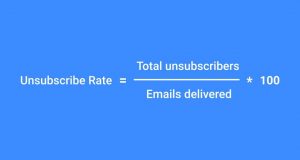Companies grow quickly and acquire others or are acquired themselves, making organizational change and restructurings a common event – in fact, over half (54%) of US CEOs plan to complete at least one acquisition within 2015 according to PwC (1). Planning for organic growth is also challenging, as many organizations expand quickly into new markets and geographies, requiring HR to manage a more complex workforce with higher numbers of remote workers, contractors, consultants, and shared resources. All of this complexity results in confusion as HR and managers try to align teams and resources with company objectives, but don’t have access to accurate workforce data to make good decisions.
This is a complex problem, but there are three key steps that can be taken to more effectively align the organization in the agile fashion that today’s environment requires.
Improve the quality of your baseline data
Critical to good decision making is clean data to drive insights. In many companies, people data is dispersed across a variety of different locations, from HRIS and talent management systems to spreadsheets, PowerPoint files, and Visio charts. When this happens, information becomes out of sync, and there is no consistent or reliable source of truth to leverage for decision making. To address this, consider instituting a data “clean-up” program, identifying all sources where organizational data is being kept, and work to consolidate these sources into one place, so that a complete picture can be assessed and errors can be identified. This doesn’t mean undergoing a massive effort to replace existing systems if, for example, multiple HRIS systems contain data – a good workforce planning tool can aggregate these data sources regularly, and visualize it to immediately identify errors.
Ensure rapid access to key information
Once the baseline data exists, now is the time to leverage it to glean insights. Don’t lock the data up for only HR leaders, but consider ways to enable self-service access for managers across the business to review key metrics around their teams. To make this effective, consider leveraging a solution that goes beyond a spreadsheet data dump, and presents the data within a visual framework of the organizational hierarchy. Enhanced org charts that highlight employee status (full time, part time, contractor, etc.), budgeted salary and benefits, skill sets, and anomalies in reporting lines can help managers get an accurate “as is” assessment of their resources, and quickly spot gaps to align with business objectives.
Make the data actionable
With a reliable stream of data and decentralized tools for visualizing workforce metrics, the data can now be made actionable as you look into the future. A good workforce planning tool can help with modeling your future org charts, showing potential changes and associated impact across the organization. Modeling should enable more than just re-arranging charts, but let managers and HR consider goals and immediately see how potential changes align. For example, if the organization hopes to improve customer satisfaction ratings by 30%, the Head of Customer Support might review key skill levels, time-to-resolution, and performance metrics across support teams, and propose a set of promotions to mentor those with lower skill sets, and several new hires to drive down time-to-resolution. Importantly, as these changes are modeled, budget, training, and other costs should also be assessed, so that plans can be executed.
Importantly, not everything needs to be done at once, and simply working to have a consolidated, reliable set of data to work with when making decisions can pay big dividends. If looking at workforce planning tools to help, consider how quickly both HR and line of business managers can leverage the insights and take action, because today’s environment demands agility.
Business & Finance Articles on Business 2 Community
(83)






